Wednesday
Dec152010
Rejected plan for Silwan includes zero forced evictions
 Wednesday, December 15, 2010 at 06:53PM
Wednesday, December 15, 2010 at 06:53PM Ma'an News Agency
20/05/2010 19:29

City planning drawings of the rehabilitated spring, and sector designs produced
by community members [MaanImages]
Images 6-7 show the Israeli plan for Jerusalem, including Al-Bustan.
by community members [MaanImages]
Images 6-7 show the Israeli plan for Jerusalem, including Al-Bustan.
By Ma'an staff writer
Bethlehem/Jerusalem - Ma'an - A team of specialists from Jerusalem and Haifa banded together when the Israeli municipality re-affirmed its intention to demolish 88 homes in the Silwan neighborhood, and constructed an alternative city plan.
While the Israeli municipal plan has the area at 80 percent green space, and the community plan has about 20 percent, the Israeli plan would see the displacement of nearly a thousand residents, create a national park and archaeological site out of the former neighborhood and connect it with the excavations at the City of David across the valley.
The cost of the plan is estimated to be some 50,000,000 shekels.
In contrast, head of the urban development team Yousef Jabareen says his plan, created with intensive community consultation and resident input, would cost the Israeli municipality nothing.
Taking into account the resources of the Al-Bustan community, if the plan were approved it would include the legalization of all homes retroactively, and promise permits to residents who decide to rebuild under plan guidelines.
Residents have the money to build and renovate, but strict Israeli policies have prevented them from developing the area, Jabareen explained.
Since 1967, families have been prohibited from expanding their homes, and any additions are built illegally, or with purchased housing licenses that cost hundreds of thousands of shekels above the permits themselves.
“The plan gives residents the incentives to carry out the plan themselves,” Jabareen said.
The Community Plan of Al-Bustan
The development scheme compiled by Jabareen and a team of five other specialized urban planners and four legal consultants, includes the rehabilitation of green space, historical structures, commercial areas and residential units, all without displacing a single resident.
The plan provides several square kilometers of gardens and planted areas, including rooftop gardens and public parks where historical artifacts are displayed and protected, as per guidelines laid out by Israel's Jerusalem municipality.
The planning team, with support from the Al-Quds Foundation for Development (AFD), developed the Community Plan of Al-Bustan, say it responds to an urgent need within the community, almost totally neglected as an area within the illegally annexed area of Jerusalem.
According to the team's research, no efforts at real city planning had been made since the area was occupied by Israel in 1967 beyond a 2004 Jerusalem city plan, titled a Green Vision for Jerusalem, and a 2010 plan announced by Jerusalem Mayor Nir Barakat, to "restore the area of the King’s Garden to its ancient glory," which he said was "part of our fundamental commitment and responsibility to preserve and safeguard Jerusalem, its landscapes and vistas, and historic and scenic sites for the sake of future generations."
The Israeli plan divided the Al-Bustan neighborhood into eastern and western sections, with approximately 350 people living in the western section and approximately 400 people living in the eastern section, documents showed. The western section's homes were all slated for demolition.
Avoiding displacement
Jabareen explained in a briefing about the Israeli initiative that, according to the plan, Palestinians in the western quarter had to find a "partner" family in the eastern quarter and arrange to move in with them. "In other words, implementing the plan requires that every family living in the eastern section of Al-Bustan share their private property and their homes with people from western Al-Bustan," Jabareen wrote.
The city planner noted that anyone living in eastern Al-Bustan who refuses to share their home in accordance with the agenda was threatened with home demolition as well.
Jabareen's plan, more than providing ample green space and reducing the number of enforced home demolitions to zero, also makes room for 70 new apartment buildings for what the plan says will "address the immediate, urgent housing needs of the local community."
When city planners and architects began their community consultations, alongside social workers and neighborhood officials, Jabareen said Al-Bustan residents were more than amenable to city planning, in fact, after long years of prohibitions on home building leading to ad-hoc and piecemeal building almost always declared illegal by Israel's Jerusalem Municipality, residents embraced change and volunteered to participate in the renovation and renewal projects.
What resulted, the planning team said, was the development of a voluntary process of renewal and reconstruction for Al-Bustan, based on the subdivision of the neighborhood in to seven semi-autonomous areas.
According to the plan, the residents of each sub-area would have the right to reorganize and renew their zone within a larger plan of built environments, including designated public parks and shopping areas. Such enthusiasm for the plan was garnered, organizers said, because the development process was based on extensive public participation by the local community.
A green neighborhood
A central element in the new, green, Al-Bustan, planners explained, would be the rehabilitation of the natural spring and the historic Ottoman building once used for water redistribution. "The source of running water will also be used to irrigate the neighborhood’s private and public green areas," a briefing explained.
Under the community plan, several roads would be eliminated, as part of the vision of changing the area into a walkable neighborhood by promoting pedestrian-only streets, starting with the construction of a north-south pedestrian boulevard lined by an open channel of water originating from the spring. A main driving artery and designated car parking areas would ensure access to the neighborhood.
Multi-use buildings housing commercial, business and residential areas would make the area more pedestrian friendly, and give the local economy a boost, planners said, and a community center at the heart of the area would provide space for local events and after-school programming currently unavailable in the neighborhood.
The plan was wholeheartedly approved by a council of neighborhood residents, and presented to the community in a protest tent, which currently serves as a community gathering place.
A long struggle
The initial Israeli demolition plan was put in action in 2004, when - according to Israeli rights group IrAmin - Municipal City Engineer Uri Shitreet ordered the clearing of 88 Palestinian homes from the Al-Bustan area under directives from the Department of Building Inspection. In 2005, a report from the group said, Palestinian residents appealed to the Israeli Attorney General to halt the planned demolitions.
At the time, largely due to international objections according to the rights group, Israel's Jerusalem Mayor Uri Lupolianski agreed to suspend the demolition plans. The suspension was declared in order to give time for Silwan residents to present an alternative town plan scheme "that would take into consideration the development needs of the residents, as well as the needs for public park land."
One such plan was presented to the City Planning Department in August 2008, but residents were told that it could not be considered because Israeli municipal plans were already in effect. A plan was presented in January 2009, but was rejected because the Israeli municipality had "designated [Silwan] to serve as a green lung for the benefit of Silwan residents, and as a national park."
Silwan residents and team planners set to work and created a building scheme they say creates a "socially, culturally, economically, environmentally and spatially vibrant and sustainable community in Al-Bustan," and describe as a renovation what will "create a place that enriches, uplifts, and inspires the human spirit."
Legal Status
The community plan was submitted formally to the Jerusalem Planning and Building Committee, which registered the plan with a formal number for consideration. However, Jabareen explained, the committee put up roadblocks.
The plan is on hold until the committee has it vetted by several other Israeli institutions, which it plans to do step by step until the government cedes to a compromise. “We will go to the local committees, and if they turn it down we will go to the district committees, and if they turn it down we will go to the courts,” he said.
“Over the last six months, I have met with government officials, I have met with the mayor himself trying to convince him that his plan will make chaos in the city,” Jabareen said.
“The Israeli plan is a bloody one,” he said, noting the building destructions and the mass displacement of Palestinian residents of the neighborhood would not stand, and would in fact cause an uprising among not only Jerusalemites, but in the West Bank and internationally.
Until now, however, Jabareen said the plan had been “rejected totally.”
Politics
“I learned just yesterday, that the Israeli municipality is preparing a new plan,” Jabareen said on Thursday, the plan involves the wholesale destruction of the Al-Bustan neighborhood, rather than just less than half of the homes under the current plan.
“It is a move to show us where the power is, it is a move to try to force us to compromise, to agree to home demolitions,” he explained.
But under the community plan, not a single home will be demolished. Renovations will go forward under the guidance of city planners, and families who have waited decades to build their homes will be able to do so, with some financial assistance from civil society groups, Jabareen explained.
Residents who have homes that do not make good use of space, and wish to re-build will be guided by city planners, and asked to cooperate with their neighbors in the seven sub-areas the valley is divided into.
“Already we have groups of volunteers who come out and participate in cleaning and restructuring projects,” Jabareen said, and anticipated that more person-power would be harnessed if the plan went forward.
“Not a single home will be destroyed under this plan, not a single person will be evicted,” Jabareen concluded.
"The plan makes sense, it is from the community and we will continue to fight for it until we succeed."
Bethlehem/Jerusalem - Ma'an - A team of specialists from Jerusalem and Haifa banded together when the Israeli municipality re-affirmed its intention to demolish 88 homes in the Silwan neighborhood, and constructed an alternative city plan.
While the Israeli municipal plan has the area at 80 percent green space, and the community plan has about 20 percent, the Israeli plan would see the displacement of nearly a thousand residents, create a national park and archaeological site out of the former neighborhood and connect it with the excavations at the City of David across the valley.
The cost of the plan is estimated to be some 50,000,000 shekels.
In contrast, head of the urban development team Yousef Jabareen says his plan, created with intensive community consultation and resident input, would cost the Israeli municipality nothing.
Taking into account the resources of the Al-Bustan community, if the plan were approved it would include the legalization of all homes retroactively, and promise permits to residents who decide to rebuild under plan guidelines.
Residents have the money to build and renovate, but strict Israeli policies have prevented them from developing the area, Jabareen explained.
Since 1967, families have been prohibited from expanding their homes, and any additions are built illegally, or with purchased housing licenses that cost hundreds of thousands of shekels above the permits themselves.
“The plan gives residents the incentives to carry out the plan themselves,” Jabareen said.
The Community Plan of Al-Bustan
The development scheme compiled by Jabareen and a team of five other specialized urban planners and four legal consultants, includes the rehabilitation of green space, historical structures, commercial areas and residential units, all without displacing a single resident.
The plan provides several square kilometers of gardens and planted areas, including rooftop gardens and public parks where historical artifacts are displayed and protected, as per guidelines laid out by Israel's Jerusalem municipality.
The planning team, with support from the Al-Quds Foundation for Development (AFD), developed the Community Plan of Al-Bustan, say it responds to an urgent need within the community, almost totally neglected as an area within the illegally annexed area of Jerusalem.
According to the team's research, no efforts at real city planning had been made since the area was occupied by Israel in 1967 beyond a 2004 Jerusalem city plan, titled a Green Vision for Jerusalem, and a 2010 plan announced by Jerusalem Mayor Nir Barakat, to "restore the area of the King’s Garden to its ancient glory," which he said was "part of our fundamental commitment and responsibility to preserve and safeguard Jerusalem, its landscapes and vistas, and historic and scenic sites for the sake of future generations."
The Israeli plan divided the Al-Bustan neighborhood into eastern and western sections, with approximately 350 people living in the western section and approximately 400 people living in the eastern section, documents showed. The western section's homes were all slated for demolition.
Avoiding displacement
Jabareen explained in a briefing about the Israeli initiative that, according to the plan, Palestinians in the western quarter had to find a "partner" family in the eastern quarter and arrange to move in with them. "In other words, implementing the plan requires that every family living in the eastern section of Al-Bustan share their private property and their homes with people from western Al-Bustan," Jabareen wrote.
The city planner noted that anyone living in eastern Al-Bustan who refuses to share their home in accordance with the agenda was threatened with home demolition as well.
Jabareen's plan, more than providing ample green space and reducing the number of enforced home demolitions to zero, also makes room for 70 new apartment buildings for what the plan says will "address the immediate, urgent housing needs of the local community."
When city planners and architects began their community consultations, alongside social workers and neighborhood officials, Jabareen said Al-Bustan residents were more than amenable to city planning, in fact, after long years of prohibitions on home building leading to ad-hoc and piecemeal building almost always declared illegal by Israel's Jerusalem Municipality, residents embraced change and volunteered to participate in the renovation and renewal projects.
What resulted, the planning team said, was the development of a voluntary process of renewal and reconstruction for Al-Bustan, based on the subdivision of the neighborhood in to seven semi-autonomous areas.
According to the plan, the residents of each sub-area would have the right to reorganize and renew their zone within a larger plan of built environments, including designated public parks and shopping areas. Such enthusiasm for the plan was garnered, organizers said, because the development process was based on extensive public participation by the local community.
A green neighborhood
A central element in the new, green, Al-Bustan, planners explained, would be the rehabilitation of the natural spring and the historic Ottoman building once used for water redistribution. "The source of running water will also be used to irrigate the neighborhood’s private and public green areas," a briefing explained.
Under the community plan, several roads would be eliminated, as part of the vision of changing the area into a walkable neighborhood by promoting pedestrian-only streets, starting with the construction of a north-south pedestrian boulevard lined by an open channel of water originating from the spring. A main driving artery and designated car parking areas would ensure access to the neighborhood.
Multi-use buildings housing commercial, business and residential areas would make the area more pedestrian friendly, and give the local economy a boost, planners said, and a community center at the heart of the area would provide space for local events and after-school programming currently unavailable in the neighborhood.
The plan was wholeheartedly approved by a council of neighborhood residents, and presented to the community in a protest tent, which currently serves as a community gathering place.
A long struggle
The initial Israeli demolition plan was put in action in 2004, when - according to Israeli rights group IrAmin - Municipal City Engineer Uri Shitreet ordered the clearing of 88 Palestinian homes from the Al-Bustan area under directives from the Department of Building Inspection. In 2005, a report from the group said, Palestinian residents appealed to the Israeli Attorney General to halt the planned demolitions.
At the time, largely due to international objections according to the rights group, Israel's Jerusalem Mayor Uri Lupolianski agreed to suspend the demolition plans. The suspension was declared in order to give time for Silwan residents to present an alternative town plan scheme "that would take into consideration the development needs of the residents, as well as the needs for public park land."
One such plan was presented to the City Planning Department in August 2008, but residents were told that it could not be considered because Israeli municipal plans were already in effect. A plan was presented in January 2009, but was rejected because the Israeli municipality had "designated [Silwan] to serve as a green lung for the benefit of Silwan residents, and as a national park."
Silwan residents and team planners set to work and created a building scheme they say creates a "socially, culturally, economically, environmentally and spatially vibrant and sustainable community in Al-Bustan," and describe as a renovation what will "create a place that enriches, uplifts, and inspires the human spirit."
Legal Status
The community plan was submitted formally to the Jerusalem Planning and Building Committee, which registered the plan with a formal number for consideration. However, Jabareen explained, the committee put up roadblocks.
The plan is on hold until the committee has it vetted by several other Israeli institutions, which it plans to do step by step until the government cedes to a compromise. “We will go to the local committees, and if they turn it down we will go to the district committees, and if they turn it down we will go to the courts,” he said.
“Over the last six months, I have met with government officials, I have met with the mayor himself trying to convince him that his plan will make chaos in the city,” Jabareen said.
“The Israeli plan is a bloody one,” he said, noting the building destructions and the mass displacement of Palestinian residents of the neighborhood would not stand, and would in fact cause an uprising among not only Jerusalemites, but in the West Bank and internationally.
Until now, however, Jabareen said the plan had been “rejected totally.”
Politics
“I learned just yesterday, that the Israeli municipality is preparing a new plan,” Jabareen said on Thursday, the plan involves the wholesale destruction of the Al-Bustan neighborhood, rather than just less than half of the homes under the current plan.
“It is a move to show us where the power is, it is a move to try to force us to compromise, to agree to home demolitions,” he explained.
But under the community plan, not a single home will be demolished. Renovations will go forward under the guidance of city planners, and families who have waited decades to build their homes will be able to do so, with some financial assistance from civil society groups, Jabareen explained.
Residents who have homes that do not make good use of space, and wish to re-build will be guided by city planners, and asked to cooperate with their neighbors in the seven sub-areas the valley is divided into.
“Already we have groups of volunteers who come out and participate in cleaning and restructuring projects,” Jabareen said, and anticipated that more person-power would be harnessed if the plan went forward.
“Not a single home will be destroyed under this plan, not a single person will be evicted,” Jabareen concluded.
"The plan makes sense, it is from the community and we will continue to fight for it until we succeed."
------------------------------------------------------------------------------------------------------------------
Plans for Al-Bustan: 1 to 5 by Yousef Jabareen
6 to 7 : Barkat's King's Garden plans by Arieh Rahamimov
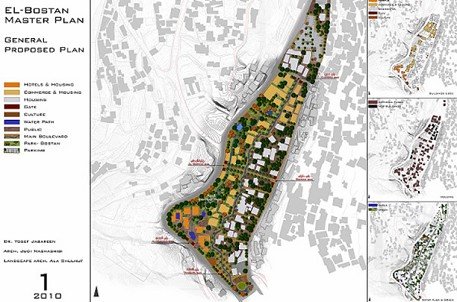
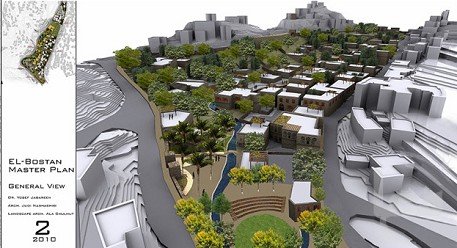
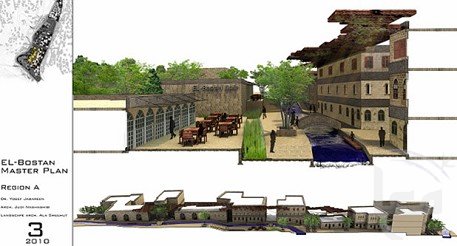
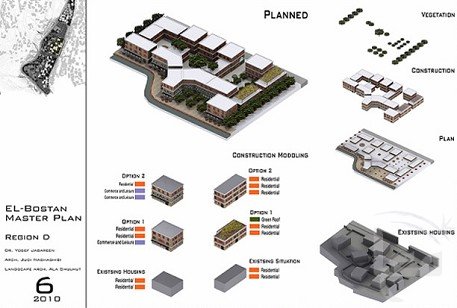

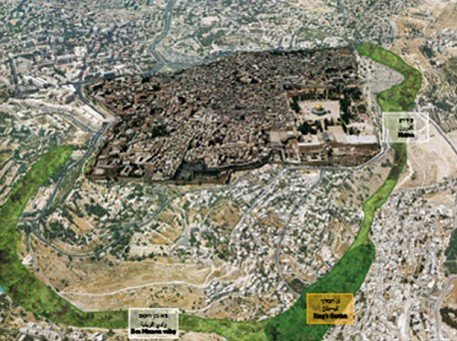
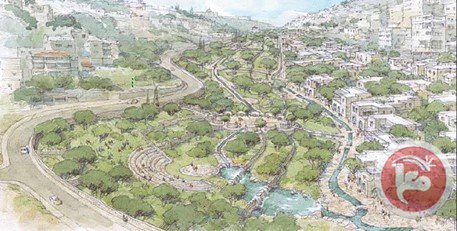
 APJP |
APJP |  Post a Comment |
Post a Comment |
Reader Comments